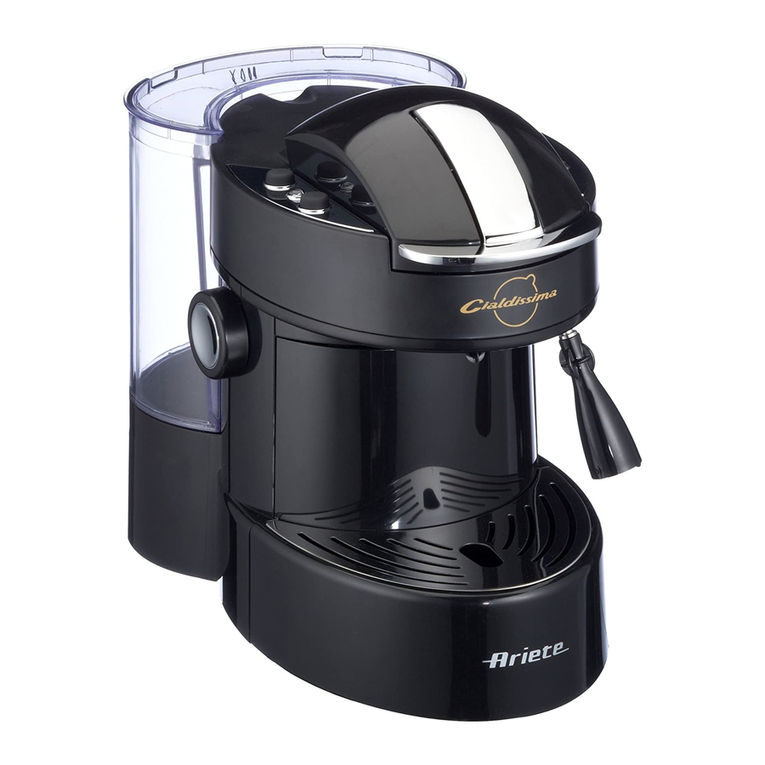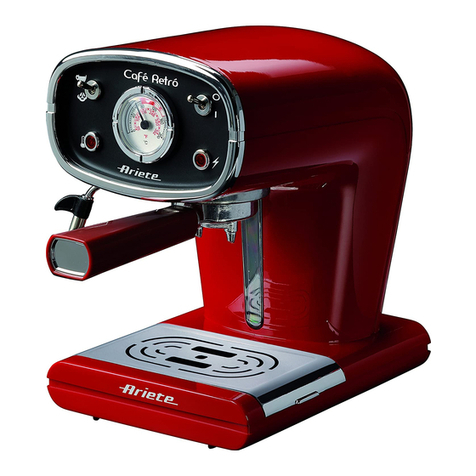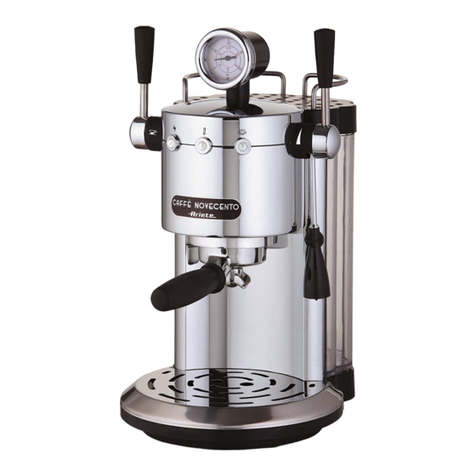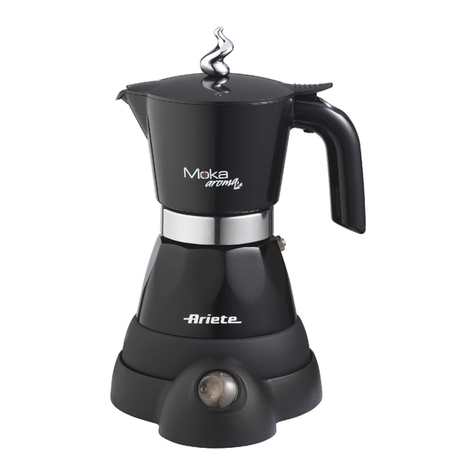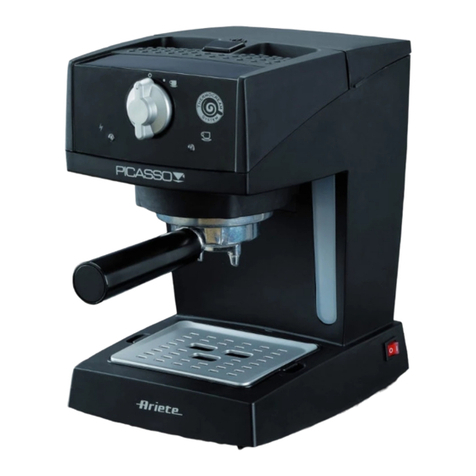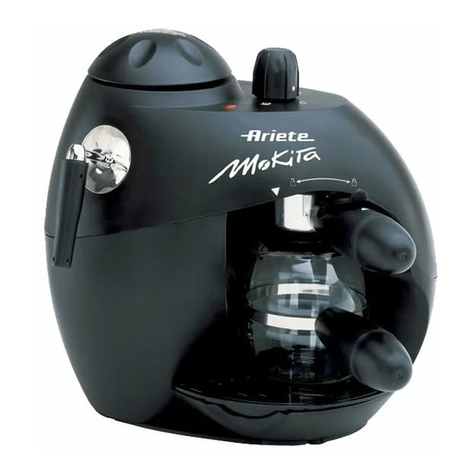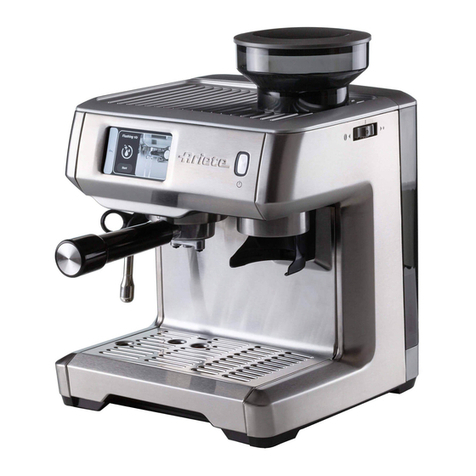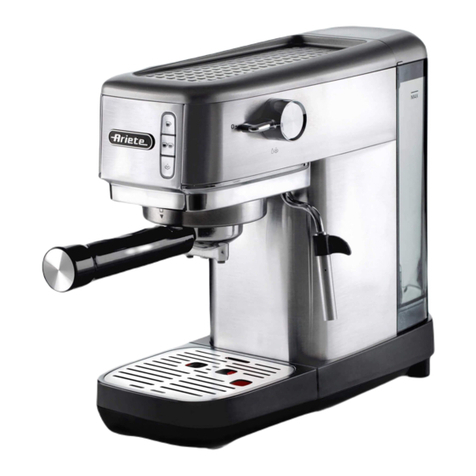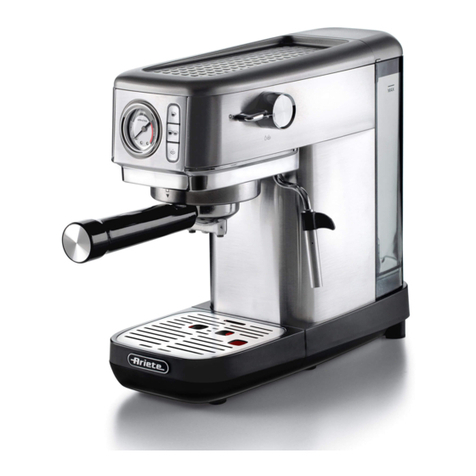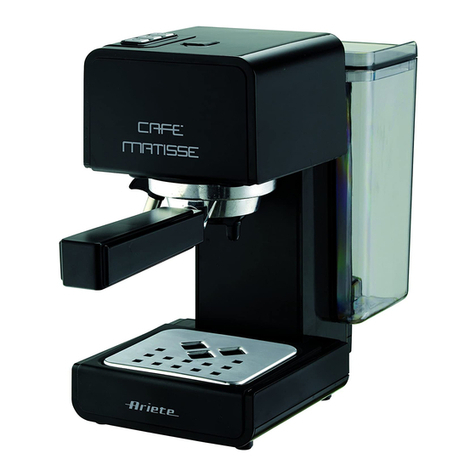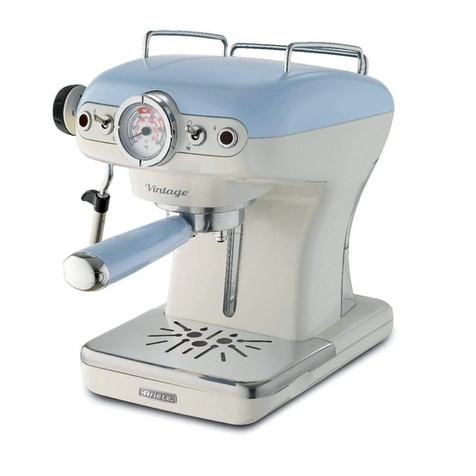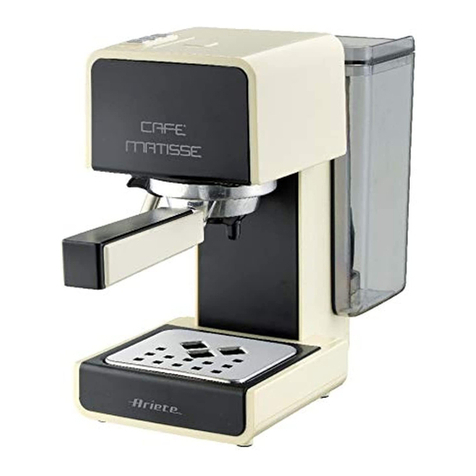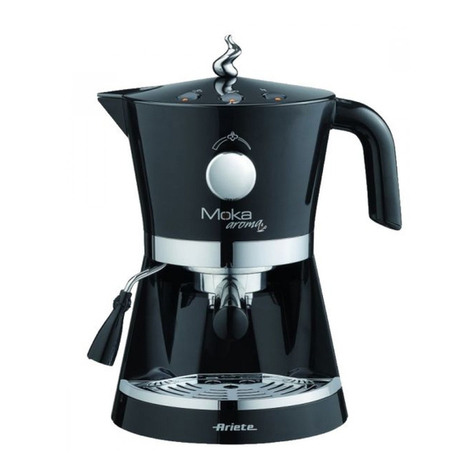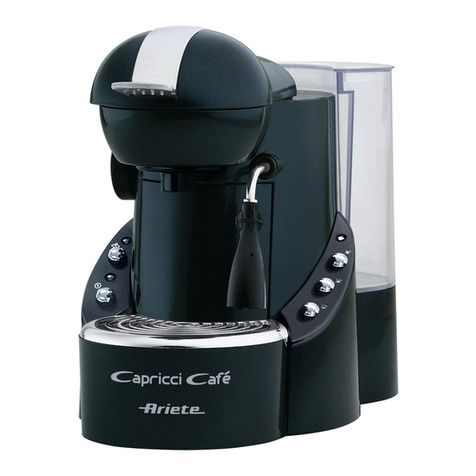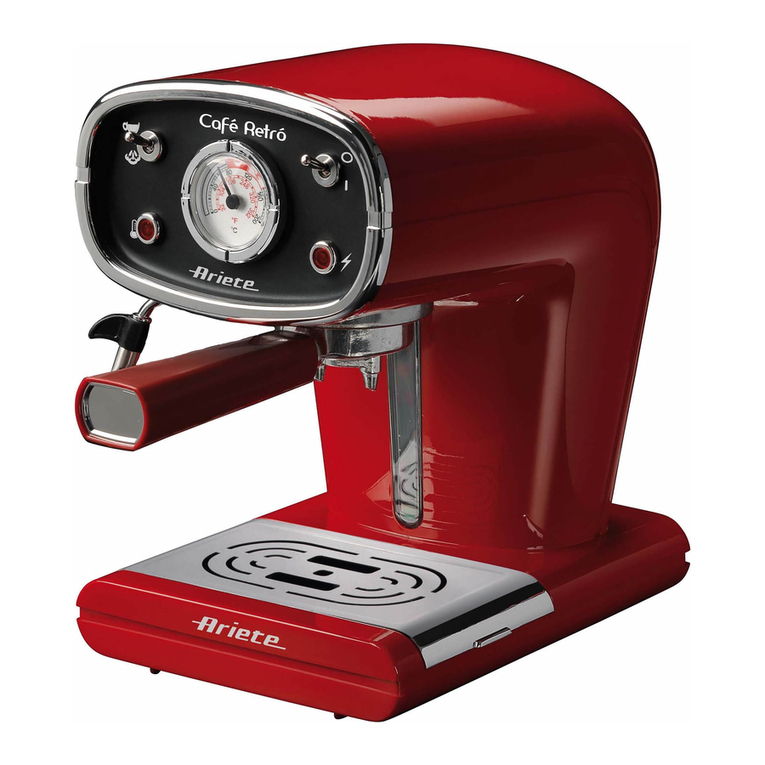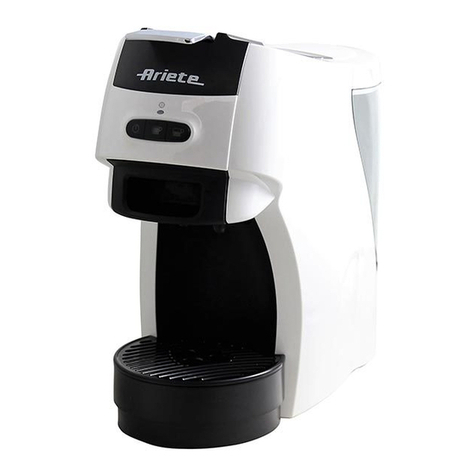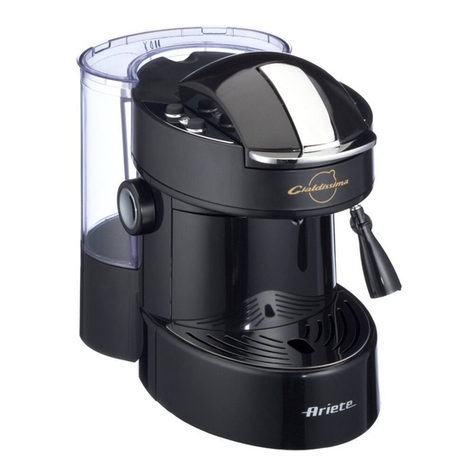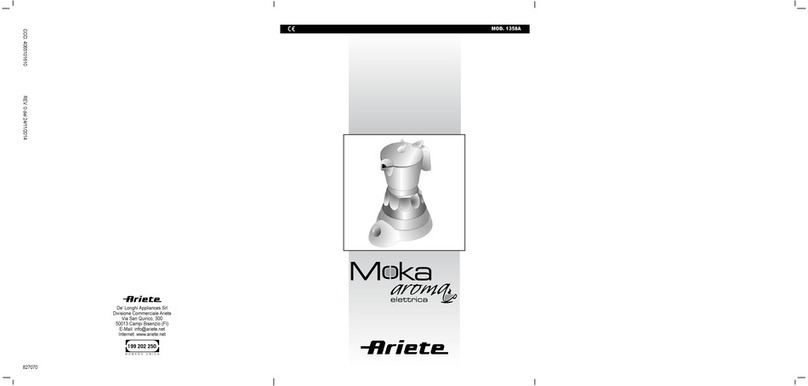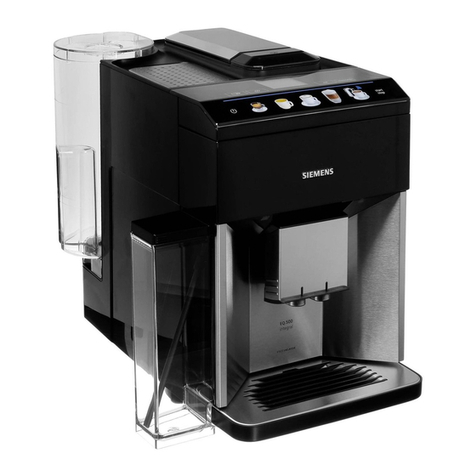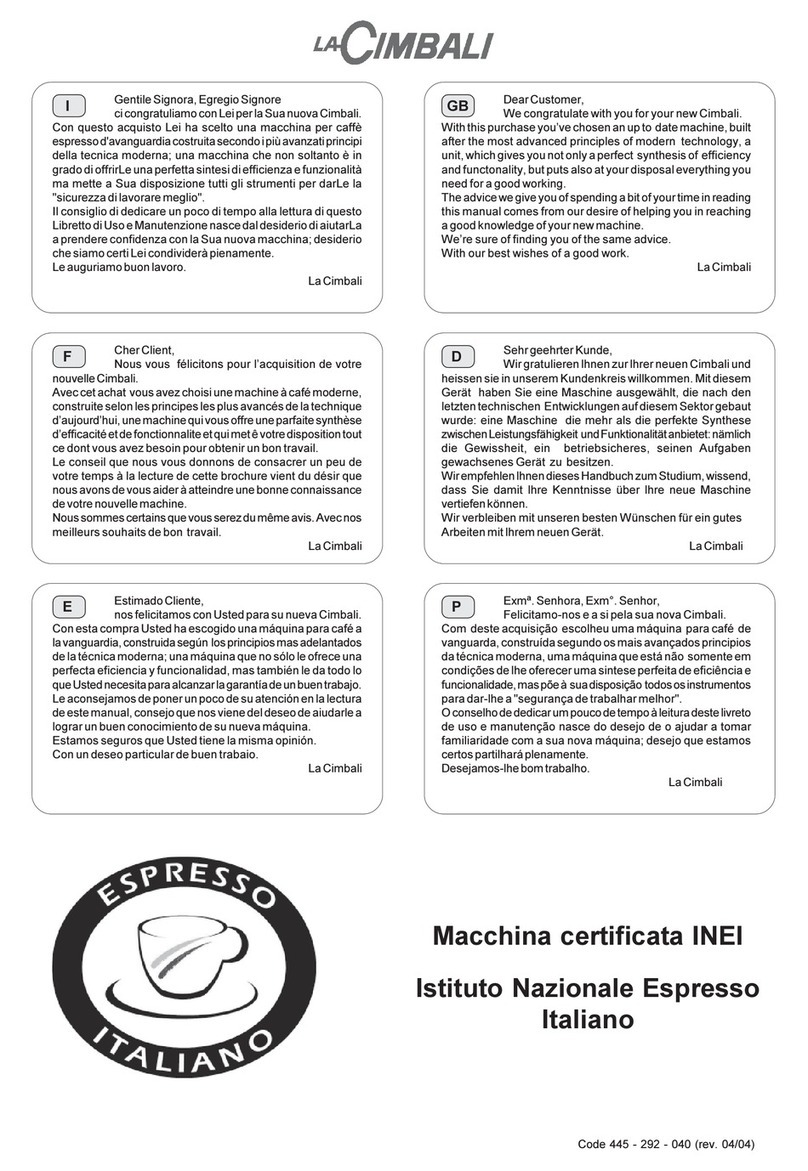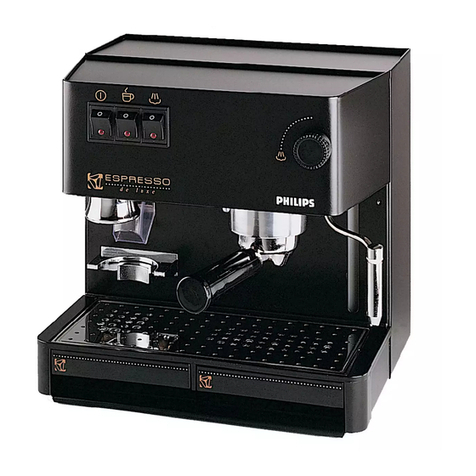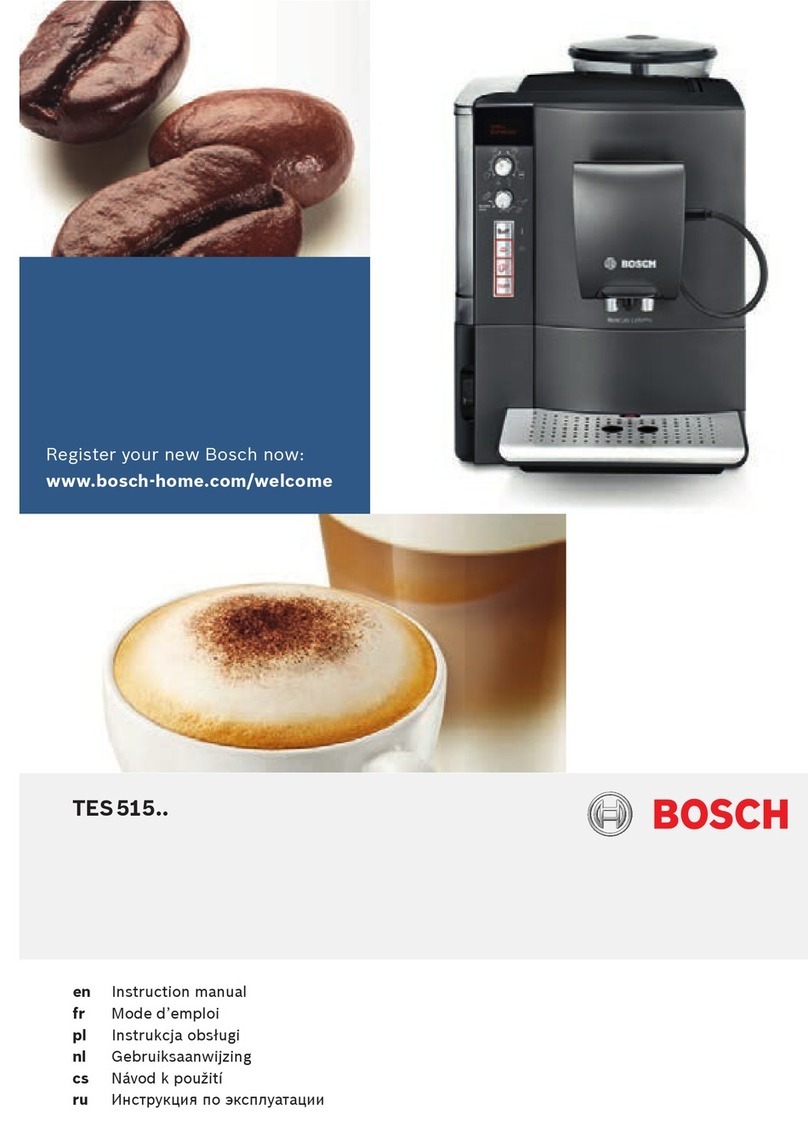
8
Even if the appliances are made in conformity with the European regulatory specications in force and therefore all poten-
tially hazardous parts are protected. Carefully read these warnings and use the appliance only for the use it is designed for
in order to prevent accidents and damage. Keep this manual close by for future consultation. If you should decide to give
this appliance to other people, remember to also include these instructions.
The information provided in this manual is marked with the following symbols indicating:
Danger for children Warning of burns
Danger due to electricity Warning – material damage
Danger of damage originating from other causes
You can use your machine to prepare coffee. This appliance is designed only for private use, and is therefore to be consid-
ered unsuitable for commercial or industrial purposes.
No other use of the machine is contemplated by the manufacturer, which is exempt from any liability for all types of damages
caused by improper use of the machine. Improper use also results in any form of warranty being forfeited.
The construction characteristics of the appliance this publication refers to do not allow the user to be protected from its hot
surfaces.
Danger of burns. Grasp the appliance by its handle.
There is a danger of burns causes by squirts of hot water and steam that might come out of the dispensing holes.
Use the appliance only with the power supply base provided. Do not use the appliance on cookers or cooking tops
turned on.
• This appliance is designed solely for household and similar uses such as:
- in cooking areas used by personnel of shops, ofces and other professional environments;
- on farms;
- guests of hotels, motels and other residential environments;
- bed and breakfast type of environments.
• We decline any responsibility resulting from misuse or any use other than those covered in this booklet.
• We suggest you keep the original box and packaging, as our free-of-charge service does not cover any damage resulting
from inadequate packaging of the product when this is sent back to an Authorised Service Centre.
• This product complies with the 2006/95/EC Directive and EMC Directive 2004/108/EC.
• This appliance is not suitable for use by people (children included) with physical, sensorial or mental disabilities; Users
lacking experience and knowledge of the appliance, or those who have not been given the user’s instructions, must be
supervised by a person responsible for their safety.
• Children must be supervised at all times to ensure they do not play with the appliance.
• Do not leave the packaging near children because it is potentially dangerous.
• In the event that this appliance is to be disposed of, it is suggested that the power chord is cut off. It is also recommended
that all potentially dangerous components are rendered harmless to prevent children hurting themselves when playing
with the apparatus.
• Before connecting the appliance to the power supply, make sure that the voltage indicated on the plate on the bottom of
the machine corresponds to the local mains voltage.
• The use of extension leads, which have not been authorised by the appliance manufacturer, may cause damage and
